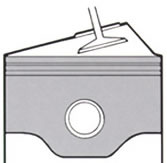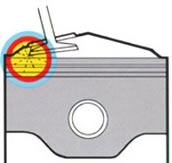
-
3059 Durand Ave. Racine, WI 53403
- 262-554-1170

- 3059 Durand Ave. Racine, WI 53403
- 262-554-1170


Timing belt function
The purpose of a timing belt, timing chain or timing gears is to keep the valves synchronized with the pistons. The intake valves open to let the air fuel mixture into the cylinder, the valves are closed during the compression and power strokes and the exhaust valves are open during the exhaust stroke. If the system loses its synchronization the valves are likely to hit the pistons and bend. A broken chain or belt is one thing that causes loss of synchronization. Another is the premature failure of a tensioner or pulley. When this happens, major engine damage usually occurs.


Belts vs. chains
In the 1960s and 70s many engines used timing chains, but because of vibration and noise issues, many manufacturers began using rubber belts.
The positive aspect of belts is that they are smooth and quiet and the disadvantage is they periodically need to be replaced. The mileage interval for replacing most belts is from 60,000-105,000 miles. Because timing belts are made of rubber compounds, age also causes them to get dry and cracked. If a vehicle is not driven very many miles, timing belt replacement should be done at a 6-7 year interval.
Today, due to design improvements chains are becoming quieter and smoother and therefore we are beginning to see more new models using chains which in theory last the life of the engine.

Replace timing belts on time
Remember with timing belts, an ounce of prevention is worth more than a pound of cure.
Know what your vehicle's timing belt replacement interval is. It's in your owner's manual.
If you bought the vehicle used and it was past the replacement mileage, determine if the belt was replaced by getting information from the previous owner or having your auto shop physically inspect it.
Ask your us if there has been any change in the replacement interval due to failure of pulleys or tensioners.
With some vehicles it's a good idea to replace the pulleys and tensioner along with the belt.



Copyright © 2025 - All Rights Reserved - pinkallaautosolutions.com
Template by OS Templates